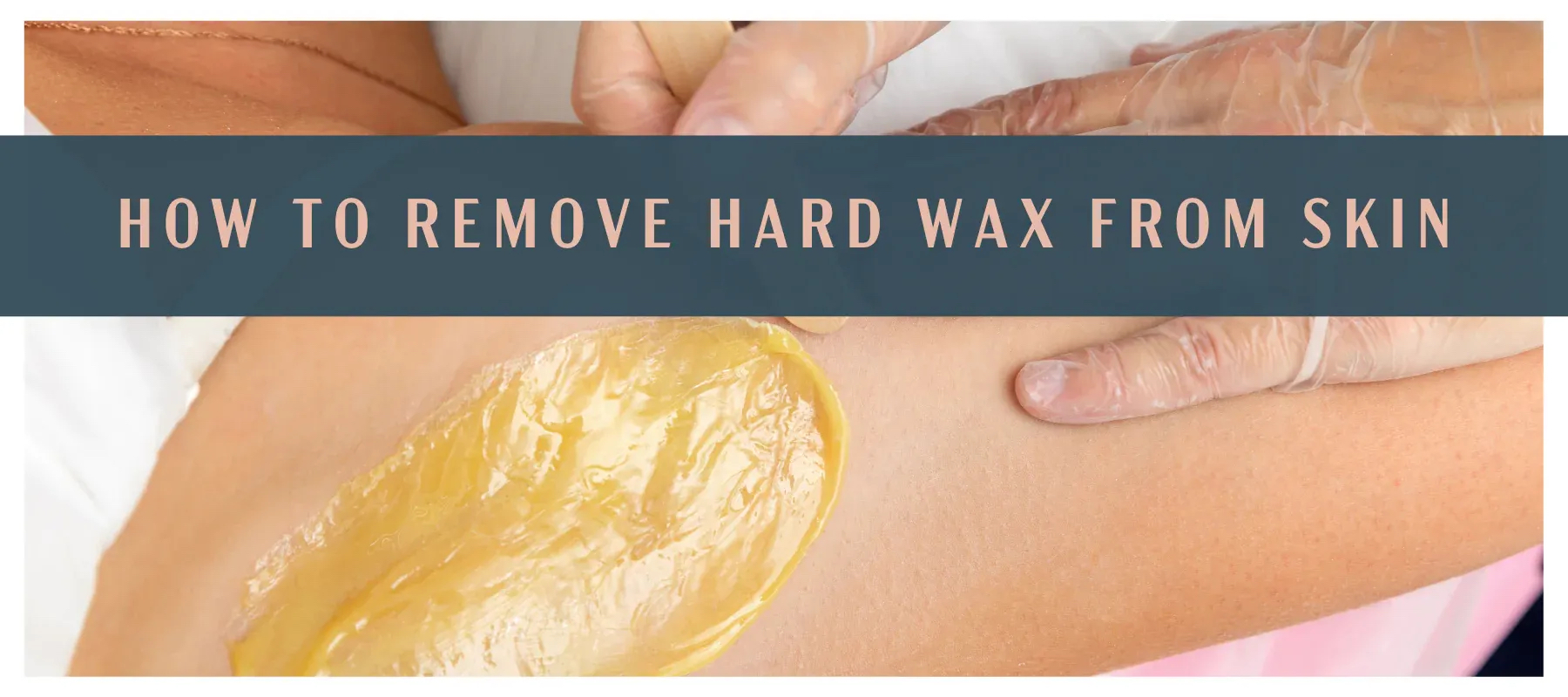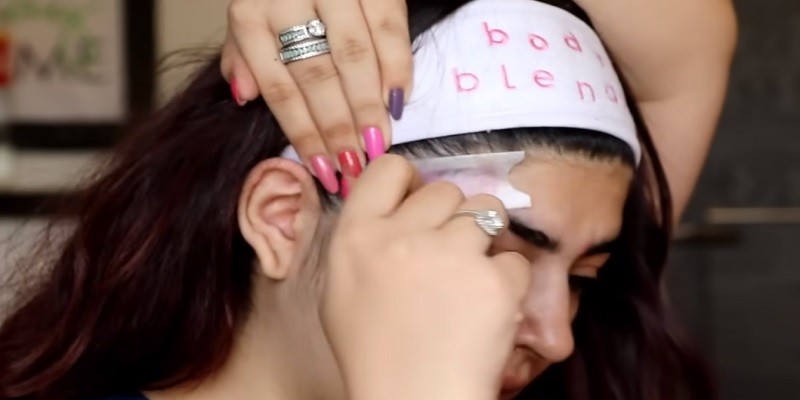Last Updated on June 18, 2025 by Jaclyn A. Neeley
To remove wax from the skin, apply an oil-based product, such as coconut oil or olive oil, and gently massage it into the affected area. Then, use a clean cloth to wipe away the wax, repeating the process as needed until all the wax is removed.
Dealing with wax on the skin can be frustrating, but with the right approach, it can be taken care of quickly and effectively. Whether it’s from a candle, waxing, or other sources, having unwanted wax on your skin is never pleasant.
The good news is that there are simple and effective methods to remove wax from the skin without causing any damage. In this guide, we will explore the best ways to get wax off the skin, so you can restore your skin to its smooth and natural state in no time.
The Types Of Wax Residues
Sticky Vs Hardened Wax
When it comes to removing wax residue from the skin, it’s essential to first understand the types of residues that one might encounter. Sticky wax residues tend to remain soft and gooey on the skin, while hardened wax residues solidify and become more challenging to remove. Both types present different challenges and require specific removal techniques.
Different Wax Removal Methods Based On Residue Type
When dealing with sticky wax residue, using an oil-based solution can be effective. Oils such as baby oil, coconut oil, or olive oil help to break down the stickiness, making it easier to wipe or wash off. On the other hand, for hardened wax residue, applying a cold compress or ice pack can help to harden the residue further, allowing for easier removal without causing irritation to the skin.
Preparing The Skin For Wax Removal
Before removing wax from the skin, it’s important to prepare the skin to minimize any potential irritation or damage. Here are some key steps to consider when preparing the skin for wax removal:
Assessing Skin Sensitivity
Before attempting to remove wax from the skin, it’s crucial to assess the skin’s sensitivity. Gently touch the area surrounding the waxed skin to check for any noticeable redness, inflammation, or tenderness. If the skin appears irritated or sensitive, it may be best to wait for it to calm down before proceeding with wax removal.
Testing Removal Products
Prior to using any wax removal products, it’s advisable to conduct a patch test on a small, inconspicuous area of the skin to ensure there are no adverse reactions. This step can help determine whether the chosen removal product is suitable for the skin and minimize the risk of potential allergic reactions or irritation.
Preparing Homemade Wax Removal Solutions
If opting for a homemade wax removal solution, it’s crucial to prepare it with caution. Using natural ingredients, such as coconut oil or aloe vera, can be effective in breaking down and removing residual wax. Ensuring the ingredients are well-mixed before application and testing it on a small area to check for any adverse reactions is essential before applying it to the entire affected area.
Techniques For Removing Wax From Skin
When it comes to at-home hair removal, waxing is a popular and effective method. However, sometimes wax can be stubborn and challenging to remove, leaving you with sticky residue on your skin. Don’t worry; there are various techniques and remedies that can help you get rid of wax from your skin. Let’s explore some of the efficient methods for removing wax from the skin.
Utilizing Oil-based Products
If you find yourself with wax residue on your skin, oil-based products can be your best friend. Oils like coconut oil, olive oil, or baby oil work wonders in breaking down the waxy residue. Apply a generous amount of oil to the affected area and gently massage it in circular motions. The oil will help soften and dissolve the wax, making it easier to wipe away. Afterward, clean the area with a mild soap and warm water to remove any remaining oil and residue.
Employing Heat And Cold Methods
Another effective technique for removing wax from the skin involves employing heat and cold methods. To use heat, you can soak a clean cloth in warm water and place it over the waxed area. The warmth will soften the wax, making it easier to wipe off. On the other hand, using an ice pack or a bag of frozen peas can help solidify the wax, making it more brittle and easier to scrape off with a dull edge, such as a butter knife. After using either method, ensure to cleanse the area thoroughly to remove any leftover wax fragments.
Using Natural Remedies For Safe Removal
For those preferring natural solutions, several natural remedies can assist in removing wax from the skin. A mixture of equal parts water and vinegar can work as a natural wax remover. Apply the solution to the affected area with a cotton ball and gently rub to dissolve the wax. Moreover, a blend of baking soda and water can also help in loosening and removing wax from the skin. These natural remedies provide a safe and chemical-free option for dealing with wax residue.
Post-removal Skincare Tips
After waxing, proper skincare is crucial to soothe and protect your skin. Implement these post-removal skincare tips to ensure your skin stays smooth and free of irritation.
Cleansing And Moisturizing Afterward
Cleansing the waxed area after hair removal helps to remove any wax residue and prevent clogged pores. Use a gentle, non-abrasive cleanser to wash the area, as harsh products may cause additional irritation. After cleansing, apply a moisturizing cream or oil to restore hydration and nourishment to the skin.
Soothing Irritated Skin
- Aloe vera gel or calamine lotion can be applied to the area to soothe any redness or irritation.
- Place a damp, cool cloth on the affected area to reduce inflammation and provide relief.
- Avoid applying any fragranced products, as these may aggravate the skin further.
Preventing Future Wax Residue Buildup
- Gently exfoliate the waxed area a few days after hair removal to prevent ingrown hairs and future wax residue buildup.
- Use a powder or oil-absorbing product to keep the skin dry and free of excess wax residue.
Seeking Professional Help When Needed
When home remedies fail to completely remove wax residue from the skin, it may be necessary to seek professional help. Consulting a dermatologist for persistent residue issues can provide effective solutions for ensuring your skin remains healthy and free from wax buildup.
When Home Remedies Fail
If you find that traditional home remedies such as using oil or warm water to remove wax residue from your skin are unsuccessful, it may be time to consider seeking professional assistance. Persistent wax residue can lead to skin irritation and discomfort, making it important to find a lasting solution.
Consulting A Dermatologist For Persistent Residue Issues
A dermatologist can offer specialized expertise in dealing with stubborn wax residue on the skin. They can assess the condition of your skin and recommend targeted treatments to effectively remove the wax while promoting skin health. Professional guidance can provide peace of mind and ensure that the residue is safely and thoroughly addressed.

Credit: honeycombwaxco.com
Frequently Asked Questions For How To Get Wax Off Skin?
How Can I Remove Wax From Skin Easily?
You can remove wax from skin easily by using baby oil or olive oil. Apply the oil to the affected area and gently rub until the wax comes off.
What Is The Safest Way To Get Wax Off Skin?
The safest way to remove wax from skin is by using a soft cloth soaked in warm water and gently wiping the affected area. Avoid scraping or rubbing too hard to prevent skin irritation.
Can I Use Ice To Remove Wax From Skin?
Yes, you can use ice to harden the wax, making it easier to scrape off. Place an ice pack or ice cubes wrapped in a towel on the wax for a few minutes, then gently scrape off the hardened wax.
Is It Safe To Use A Razor To Remove Wax From Skin?
It’s not recommended to use a razor to remove wax from skin as it can cause cuts, irritation, and ingrown hairs. Opt for safer removal methods such as using oil or a warm cloth.
How Do I Soothe Skin After Wax Removal?
After removing wax, soothe the skin by applying aloe vera gel or a calming lotion to reduce redness and irritation. Avoid hot baths or exposure to direct sunlight immediately after waxing.
What Should I Avoid After Removing Wax From Skin?
After waxing, avoid using harsh chemicals, exfoliating products, or direct sun exposure for at least 24 hours to prevent skin irritation. Stick to gentle skincare routines to allow the skin to recover.
Conclusion
Removing wax from the skin can be a frustrating experience, but with proper techniques and precautions, it can be effectively managed. By using the methods mentioned in this blog post, you can safely and easily remove wax from your skin without causing irritation or damage.
So, the next time you find yourself in this predicament, you’ll know exactly what to do!


